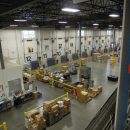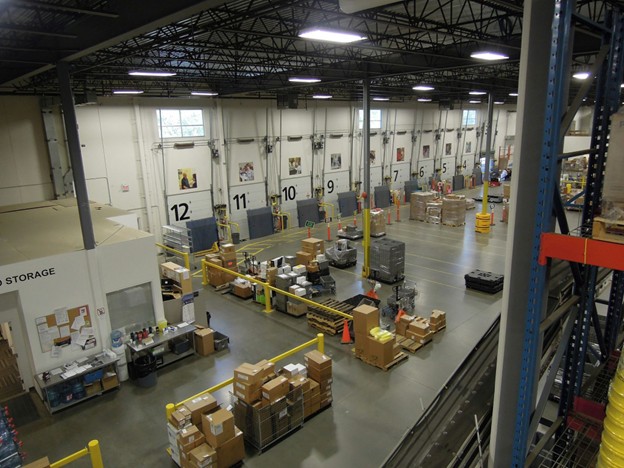
Inside the Box: How Tech is Powering Multi-Storey Warehousing

Photo by Doug Nealy on Unsplash
With urban space being expensive and delivery expectations growing, the logistics industry in the UK is looking upwards. Multi-storey warehouses are beginning to reshape urban logistics hubs in London and other UK cities. Not only do they give businesses a chance to have all of their operations in a single place, they can help regenerate brownfield sites and reduce the cost and distance of last-mile delivery.
But these buildings are far more than just stacked sheds. They rely on technology that’s not only sophisticated but specifically configured for vertical operation.
While many of the core technologies are shared with traditional single-storey warehouses, their application in multi-storey buildings demands a different approach—with new layers of complexity, spatial coordination, and real-time responsiveness.
Tech Reimagined for Vertical Logistics
Multi-Storey warehouses present unique challenges: coordinating inventory across floors,optimising space across many levels, transporting goods vertically, and ensuring efficient workflows often in compact footprints. As a result, familiar warehouse technologies must be re-engineered to function across multiple levels and floor types.
Vertical Transport: Lifts, Conveyors & Smart Routing
One of the biggest differences in a multi-storey warehouse is how goods move between levels. Standard floor-to-floor movement doesn’t exist—vertical transport systems become mission-critical.
- Vertical Lift Modules (VLMs) and freight elevators are integrated directly into racking systems or structural cores.
- Automated spiral conveyors and goods lifts are programmed with floor-specific logic to ensure items reach the correct level without delay or congestion.
- These systems must also account for weight limits, queuing logic, and synchronisation with loading bays.
AS/RS & Robotics Adapted for Multi-Level Use
Automated Storage and Retrieval Systems (AS/RS) are increasingly common, but in a multi-storey warehouse, they must span multiple levels or be duplicated on each floor.
- In some facilities, robotic picking arms are installed on mezzanine levels with goods routed via lifts to packing areas.
- Autonomous Mobile Robots (AMRs) are programmed with 3D spatial awareness and use sensors and real time computing to navigate floors, avoid vertical hazards, and interface with lift systems.
WMS with Floor-Specific Intelligence
Warehouse Management Systems (WMS) must also be upgraded for multi-storey layouts:
- Systems are configured to track inventory by floor, aisle, and even vertical zone.
- Picking routes are optimised to minimise lift usage or group orders to reduce inter-floor transport.
- AI tools simulate movement patterns to identify bottlenecks unique to vertical workflows.
Floor-by-Floor IoT Monitoring
IoT sensors are common in all modern warehouses—but in a multi-storey setting, they must be zoned floor-by-floor to manage:
- Temperature and humidity are specific to each level (especially in chilled or mixed-use warehouses)
- Lighting, air quality, and energy use, which can vary based on how each floor is used (e.g., high-traffic vs. storage-only)
This granular control helps meet ESG goals and improve operational consistency across vertical stacks.
Dock Management & Last-Mile Adaptation
In many urban multi-storey warehouses, loading bays are distributed across different levels—or accessed via internal ramps. This requires custom dock management software that:
- Allocates delivery times by floor-level loading zones
- Integrates with EV charging systems and real-time delivery routing
- Supports split-floor distribution, where goods are received on one level and dispatched from another
These are rarely needed in single-storey warehouses but become essential when land constraints force vertical layouts.
The Vertical Tech Stack: What’s Next?
Looking ahead, expect more multi-storey developments to deploy:
- Digital twins that simulate warehouse movement across all levels
- 5G-enabled robotics for faster communication between machines on different floors
- On-site AI hubs that manage every floor’s lighting, energy, inventory, and even staff flow.
Not Just Taller—Smarter
Multi-Storey warehouses are not just taller versions of traditional sheds. They are digitally sophisticated structures that rely on finely tuned tech ecosystems. Each floor becomes a distinct environment requiring its own smart systems—all working in harmony.
For occupiers and developers, the challenge isn’t just building up—it’s building up intelligently.
Looking to invest in or list vertically optimised industrial space?
Explore cutting-edge multi-storey properties across the UK on NovaLoca.com.
